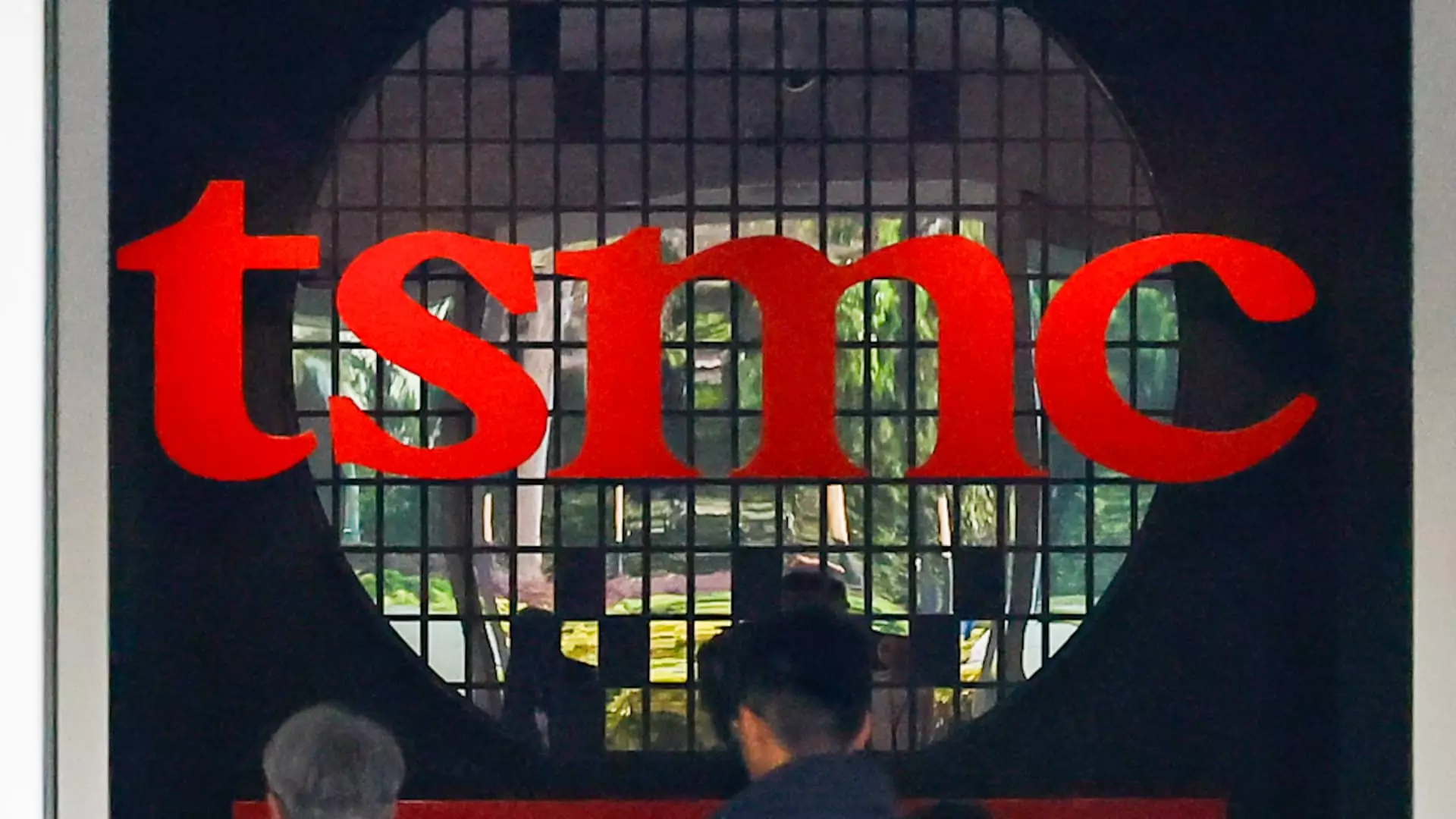The latest financial disclosures from Taiwan Semiconductor Manufacturing Company (TSMC) mark a milestone in the semiconductor industry’s relentless pursuit of innovation and market dominance. TSMC’s second-quarter performance surpassed expectations remarkably, driven primarily by the soaring demand for artificial intelligence (AI) chips. With a staggering 61% year-over-year increase in profit, the company exemplifies how technological advancements and strategic positioning can translate into extraordinary financial success. These results are not mere statistical victories—they are a testament to TSMC’s agility in adapting to and capitalizing on emerging technological trends.
This surge in profitability is amplified by a robust outlook for the upcoming quarter, with revenue projections approaching $32 billion—an 8% increase from the previous quarter and a 38% spike compared to last year’s figures. Such figures reflect an industry that is not merely growing but experiencing exponential acceleration. TSMC’s leadership remains confident in its growth trajectory, fueled by high demand for its cutting-edge 3nm and 5nm process technologies, critical for the development of AI and high-performance computing systems.
Leading the AI Revolution
At the heart of TSMC’s impressive performance is its pivotal role in the AI ecosystem. As the world increasingly shifts towards automation, intelligent systems, and data-driven solutions, the demand for specialized chips has skyrocketed. TSMC’s manufacturing expertise positions it as a crucial node in this supply chain, especially among industry giants like Nvidia and Apple. The company’s advanced process nodes—particularly those below 7nm—dominate its wafer revenue, constituting a dominant 74% share. This technological edge not only powers current AI applications but also sets the foundation for future innovations.
The industry analysts’ consensus underscores a key insight: the AI boom is not a fleeting trend but a sustainable growth engine. As AI applications expand across sectors—automotive, healthcare, finance, and beyond—TSMC’s technological leadership will likely translate into continued financial gains. This is a rare instance where technological excellence and market demand are perfectly aligned, creating an environment ripe for strategic expansion.
Geopolitical and Economic Challenges: An Uncertain Arena
Despite its stellar financials and technological dominance, TSMC finds itself navigating a treacherous geopolitical landscape. Trade tensions between the United States and Taiwan threaten to impose significant barriers to growth. The escalating trade policies, especially under the influence of U.S. policies aiming to limit China’s access to advanced semiconductors, introduce a layer of risk that cannot be ignored. The potential for steep tariffs—such as the 32% tariffs recently announced—could disrupt the supply chain and impact TSMC’s global market share.
Furthermore, the U.S. trade restrictions on exports to China complicate matters for TSMC’s major clients like Nvidia and AMD. These restrictions could hinder growth in one of the industry’s most critical markets, despite recent diplomatic negotiations that offer some relief. The appreciation of the Taiwanese dollar and potential order reductions from smartphone and PC manufacturers due to macroeconomic pressures further threaten to temper the company’s growth prospects.
Yet, TSMC’s resilience may lie precisely in its technological prowess and diversified customer base. While geopolitical risks loom large, the company’s ability to innovate and adapt remains its strongest armor. Strategic investments in advanced fabrication nodes continue, positioning TSMC to stay ahead in the high-stakes race for semiconductor supremacy.
Future Outlook: A Mixed Path Forward
Looking ahead, TSMC’s trajectory appears promising but not without hurdles. The company’s leadership projects a 30% rise in full-year 2025 revenue, supported by expanding AI markets and technological leadership in next-generation processes. However, significant external headwinds could impede this growth—a potential reversal in trade policies, currency fluctuations, and global macroeconomic uncertainties could all influence outcomes.
The industry’s path is fraught with geopolitical tensions that threaten to disrupt supply chains, limit market access, and slow expansion. Still, TSMC’s strategic focus on innovation, diversified clientele, and emerging markets potentially outweigh these risks. Its role as a technological powerhouse in a world increasingly driven by AI and digital transformation secures its position at the forefront of global semiconductor leadership, but complacency is a luxury it cannot afford. The company’s future will depend largely on its ability to navigate these geopolitical currents while maintaining its relentless push toward technological excellence.


Leave a Reply